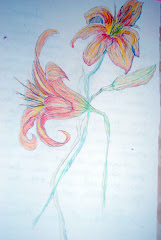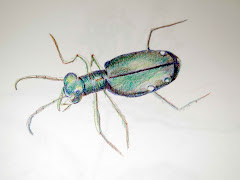



Today I was thinking about the term “sit-spot”, this is an expression I’d heard from my friend Mira, she’d had some exposure to the Wilderness Awareness School, located in the state of Washington, and this is where she had first learned the expression. Basically, it is a school that trains people to be naturalists, but more than that, they are taught how to raise their awareness in the great outdoors. Through courses of study such as wilderness survival, wildlife tracking, bird language interpretation, edible and medicinal plants, outdoor skills, and traditional craft-making - all knowledge drawn from indigenous cultures from around the world – students learn to connect with the natural environment, on a very personal and often, profound way.
But at the center of all of this learning and skill development, is the concept of the “sit-spot”. The idea is, you find a place to go in nature that you can go back to, over, and over, everyday, and begin to learn it like the back of your hand. Students are instructed to visit it at night, during the day, rain or shine, in winter, summer, spring and fall. They are told to observe the birds they find there, and the trees in which they live. In addition, they are told to watch the plants and learn to recognize them in all seasons; to learn the animals that are found there, and to observe their behavior in all situations, and seasons. The philosophy is, that that there is no better teacher than a single place, a place that you know, and know intimately.
I, of course, was excited to realize that I was already visiting a “sit-spot”, indeed, I had been doing so for over ten years: a favorite little brook on Fish Creek. I may not have visited it in all seasons, and not necessarily in all kinds of weather, but I had been consistent, and the rewards from this experience have been many. I have found a confidence in myself, which was not there before, and I have found that I can be my own teacher, when need be.
I started out with a simple goal back then: I wanted to find flowers to draw. And, at first, that is what I concentrated on, but it was not long before my attentions were drawn elsewhere: insects that crawled on the flowers; bright red berries that grew near by; an unusual mammal that ran very quickly, and stood, to my delight, on his hind legs to scan the horizon above the grass line; the water level, and how it was effected by weather; the birds that were chattering in the trees; and the plants that made a thick, dense cover in which I could hide.
Quite naturally, I began asking myself questions as to what I was seeing, and little by little, I have set about to answer those questions. Of course, there are many more unanswered questions than answered ones, and that’s why I never get bored with going back to the same place again and again. And although my travels have expanded, and I have sought out these kinds of conundrum wherever I go now, it is still my favorite sit-spot that draws me back, day after day.
Now, encouraged by what I learned about the Wilderness Awareness School, and others like it, I am inspired to deepen my commitment to this place, expanding my modes of observation, times of day which I visit, and types of weather in which I go, I know that I will learn even more.
Also, I am greatly appreciative of the many people whom I have met, through this blog, and elsewhere, people who have been working at answering these questions far-longer than I; who each have their own sit-spot, some of whom have been generous enough to share them with me; and who, together, are in possession of a combined knowledge that encompasses all of the skills listed above; a knowledge that is both humbling and inspiring. So thank you, fellow naturalists, for all that you do, all that you share, and all that you dream, so that I, too may follow my own dreams.
For, when I sit in nature, and I am quiet enough to really see what is there to be seen; to really listen, and actually become a part of what I am experiencing, I take in this beauty on a cellular level, a level that is both energetic and physical, so that the teaching is not only done with words in books, or notes taken in a journal, but sometimes, something much deeper: beautiful and inexplicable.


















